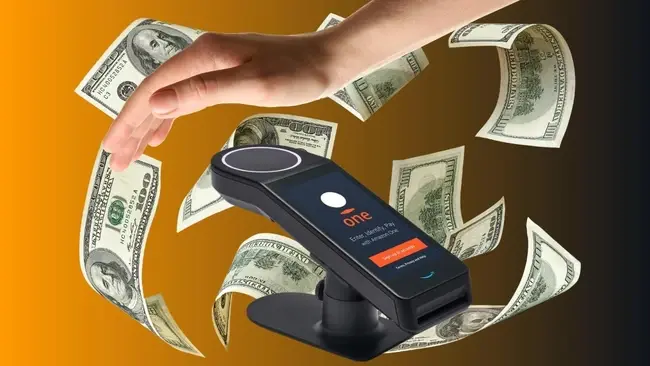Amazon's palm-scanning payment tech is coming to Whole Foods stores across the US, allowing customers to ditch their credit cards for their palm prints when paying for shopping.
The biometric payment system, known as Amazon One, will allow shoppers to hover their palm over a reader device to pay for items, identifying the individual's unique palm signature associated with their payment card to charge them for their purchase.
“This means Whole Foods Market customers who choose to use Amazon One will no longer need their wallet or even a phone to pay—they can simply hover their palm over an Amazon One device,” the retail giant said in a statement.
“For Prime members who link their Amazon One profile with their Amazon account, savings will automatically be applied. It’s that simple.”
Since the tech’s launch in 2020, the service has already been rolled out in er 200 stores across California, New York and Texas, but Amazon has said it is “doubling down” on the tech after reaching a milestone of over 3 million uses.
This includes Amazon’s own retail stores, various sports stadiums, entertainment venues, and travel retailers like Hudson, CREWS, and OHM at several U.S. airports, in addition to Panera Bread through a partnership announced in March 2023.
The system has also been steadily rolling out to Whole Foods locations, ahead of today’s announcement, but will now be implemented in over 500 stores across the country.

No ID needed
Amazon has also announced that the reader would be able to verify customers’ ages, allowing customers to use the device to purchase alcohol, such as beer at sports events, just by hovering their palm over the reader.
It’s not clear if this part of the system will also work at Whole Foods or if customers will need to show their ID to store staff, as is common with most other self-checkouts.
To use the system, customers can simply pre-enrol via the web using their credit or debit card, Amazon account, and mobile number in a couple of minutes.
They then complete their enrollment process the first time they scan their palm over the Amazon One device when visiting a participating Whole Foods store.
“We are always looking for new ways to delight our customers and improve the shopping experience,” said Leandro Balbinot, CTO at Whole Foods Market, in a statement.
“Since we’ve introduced Amazon One at Whole Foods Market stores over the past two years, we’ve seen that customers love the convenience it provides, and we’re excited to bring Amazon One to all of our customers across the U.S.”
Data at the palm of your hands
Of course, Amazon’s entry into biometric payments isn’t just about speeding up checkout lines for shoppers’ convenience.
Despite the retailer’s assurances, the launch of the tech has been plagued by a variety of privacy, leading one early adopter to choose to abandon their plans to use the readers, after receiving pressure from consumer privacy and advocacy groups.
Denver Arts and Venues had once been planning to leverage the tech for ticketless entry at Red Rocks Amphitheater, but it severed ties with the retailer after an open letter suggested Amazon could share palmprint data with government agencies and that it could be stolen from the cloud by hackers.
By combining biometrics with payment card information and Amazon accounts, the retailer has created a system that could allow it to track customers both online and offline, and then serve highly personalised ads and recommendations, to boost its revenue.
Amazon was just fined by the Federal government for spying into our bathroom and bedroom cameras and secretly recording the voices, locations and conversations of our children, but its CEO Andy Jassy insists we trust him with our palm prints. https://t.co/SocUQV53Xx
— Athena Coalition (@athenaforall) July 20, 2023
The move comes just over a month after the FTC fined the retail giant $31 million for privacy violations for failing to inform parents it was storing recordings of children's voices through its Amazon Alexa app.







Comments ( 0 )